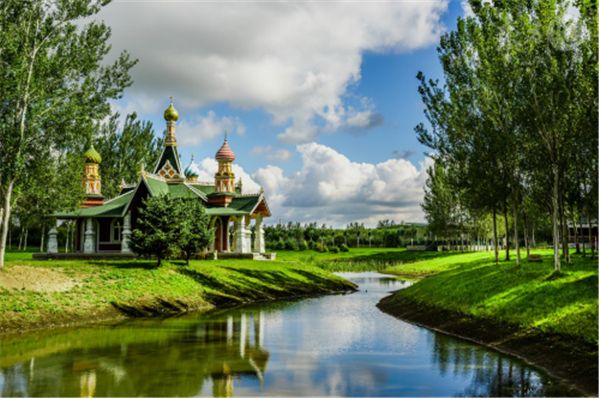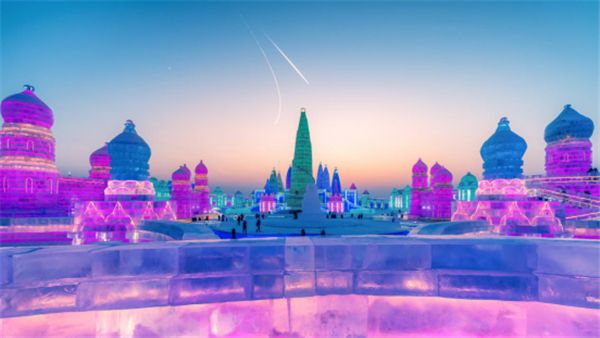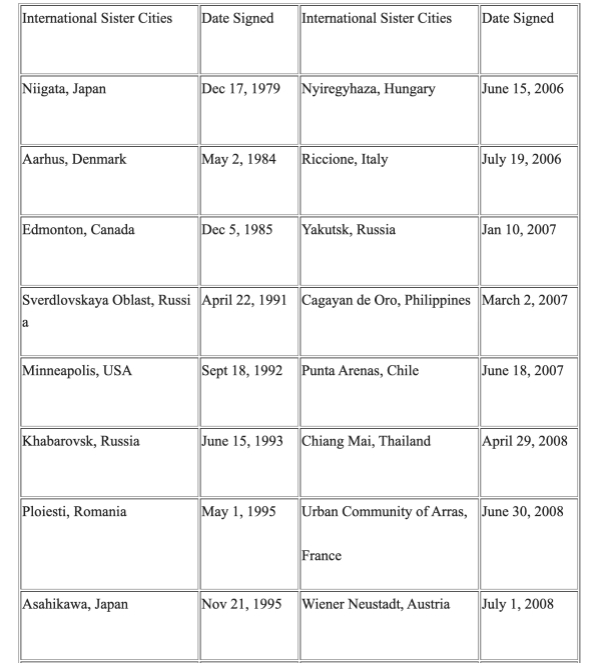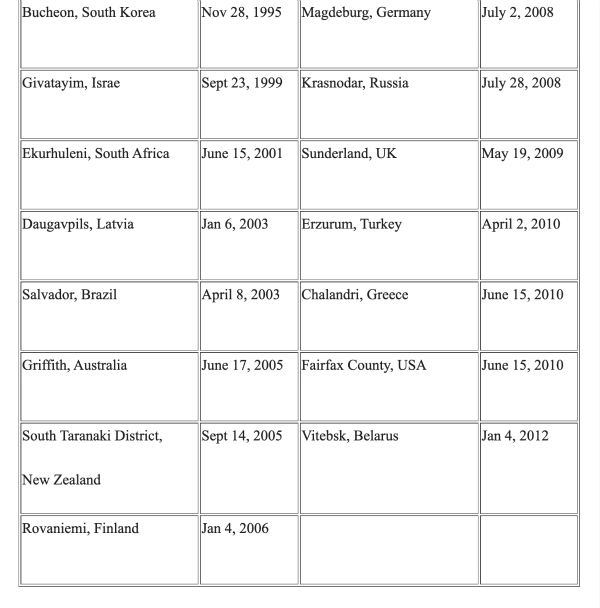Population: a registered population of 9.49 million (As of 2020)
Location: in Northeast China and the central area of Northeast Asia
Area: 53,100 square kilometers
History
Harbin is a city with a long history and no city wall. In the late Paleolithic era around 22,000 years ago, Harbin’s ancestors labored and lived before entering into the Neolithic Age 5,000 years ago and finally the late Yinshang Period (the Bronze Age) about 3,000 years ago. The city is the birthplace of both the Jin and Qing dynasties and in 1115 AD, the Jin Dynasty established its capital in Harbin’s present-day Acheng district.
By the end of the 19th century, there were dozens of villages in Harbin with a population of 30,000—this laid the foundation for the formation and development of a city. The construction of the Middle East Railway (from 1896 to 1903) brought an influx of foreign immigrants which boosted business and bolstered the financial district. At the beginning of the 20th century, Harbin became an open, international city which attracted 160,000 immigrants from 33 different countries—19 of which established consulates —and transformed the city into the economic and international center of North Manchuria.
In 1932, Harbin was under the control of the Japanese authorities and, upon liberation in 1945, hosted a population of 700,000. On April 28, 1946, the Northeast Democratic Allied Army entered and garrisoned the city, making it the first to be liberated at the time.

After the People’s Republic of China was founded in 1949, Harbin was identified as a key national construction city and during the first Five Year Plan period (1953-1958), among the 156 construction projects of the former Soviet Union providing aid to China 13 were launched in Harbin. Since then, Harbin has become an important national base and rapidly transformed from a consumer city to a newly-emerging industrialized city.
The city underwent economic reconstructure from 1958-1965 and during the Great Cultural Revolution, both the economy and the social order of the city were severely damaged, but since China opened its doors and adopted reform, the socio-economy of Harbin has made remarkable achievements. In recent years, Harbin’s economy has grown rapidly and has become one of the top-10 cities of urban competitiveness in China with a top-20 competitive tourist industry and has ranked among the top-10 in terms of overall strength. In terms of “the Happiest Cities in China,” Harbin ranks third.
Harbin actively constructed the national demonstration city of public transit and the national civilized city and it ranked the third place in the cities nominated in the national urban civilization degree index evaluation. Harbin has been awarded with a series of honors, including “City of Music”, “Beautiful City of Wetlands” and the “National Double-support Model City”. The Crime rate among ten thousand people keeps the lowest among all capital cities for three consecutive years. With the growing international presence and international influence, Harbin has evolved from an industrial city into a city with comprehensive strength and has established far-reaching reputation worldwide.
Administrative divisions
Harbin city governs nine districts — Daoli, Daowai, Nangang, Xiangfang, Pingfang, Songbei, Hulan, Acheng and Shuangcheng; seven counties — Bayan, Binxian, Yilan, Yanshou, Mulan, Tonghe and Fangzheng; as well as two county-level cities—Wuchang and Shangzhi.

Harbin’s coordinates are 125°42′-130°10′ east (longitude) and 44°04′-46°40′ north (latitude). The city belongs to the monsoon land climate of the middle latitudes and the average temperature in Harbin is 3.5℃, while its highest and lowest monthly average temperatures are 23.0℃and -21.4℃, respectively.
The winters are long and summers are short, which is what earned Harbin its nickname, “Ice City in China.” The annual precipitation is 729.4 mm and the rain falls mainly between June and September with an annual frost-free period whichs lasts 150.4 days.
Located in the Songmen Plain, Harbin occupies 45.3 percent of the plain’s total area, with a cultivated area of 2,281,000 hectares (most of which is black soil with rich nutrients) where 63 species of various minerals have been found - 25 of which are proven resource reserves - with 36 county-level nature reserves (an area of 572,000 hectares), 12 of which are provincial-level. Within the reserves, there are 80 kinds of national first and second class protected animals and eight kinds of national first and second class protected plants.
Resources
Harbin has plentiful and numerous valuable natural resources with a concentration of planting and cultivating locations.
Harbin’s plant resources include: Korean pine, larch, Pinus ponderosa and Manchurian ash, the medicinal ingredients of ginseng, cork, earthworm, sophora and other valuable herbs like bracken, osmunda and monkey legs with wild vegetable dishes including pine nut and hazelnut oil, fruits like apricots, plums, prunus, pears, grapes and other berries are grown there. There are more than 130 species of wild flowers, including lilies and lilacs - which is Harbin’s official city flower.
Harbin’s wild animal resources include: Tiger, deer, white spoonbills and other nationally protected animals like white and black stork, white-tailed marten and 40 kinds of rare fish including carp, silver carp, dog fish and dace.
Harbin is also home to 20 kinds of minerals, including the major minerals in the Heilongjiang province such as coal, natural gas, copper, zinc, tungsten and molybdenum in Heilongjiang Province.
Local Specialty

Among China’s capital cities, Harbin has the largest agricultural and rural areas. Under its jurisdiction, Harbin - including is districts and counties (as well as county-level cities) — have natural growing conditions, rivers, fertile land and fresh air which comes with the advantage of the production of natural green food, the standards of which have risen significantly.
The identified areas of green, pollution-free and organic food production (including the mountain products and aquatic areas) have exceeded 32.33 million mu. Brands including Wuchang Rice, Harbin Beer, Harbin Roulian Sausages, Harbin Hi-Tech Soybeans, Shuangcheng Millet, Longdsan Milk, Green Mountains Frozen Food, Yanshou Lychen Food and Zhenzhushan Food are some in a series of organic food producers have become reputable brands across China.
Harbin also has plenty of Hericium, fungi, mushrooms, Osmunda cinnamomea, ferns, hazelnuts, pine nuts and other mountain specialties which are easy to store after drying, salting and compressing and are sold overseas, touted as “Northern Delicacies in China.”
Sister cities


